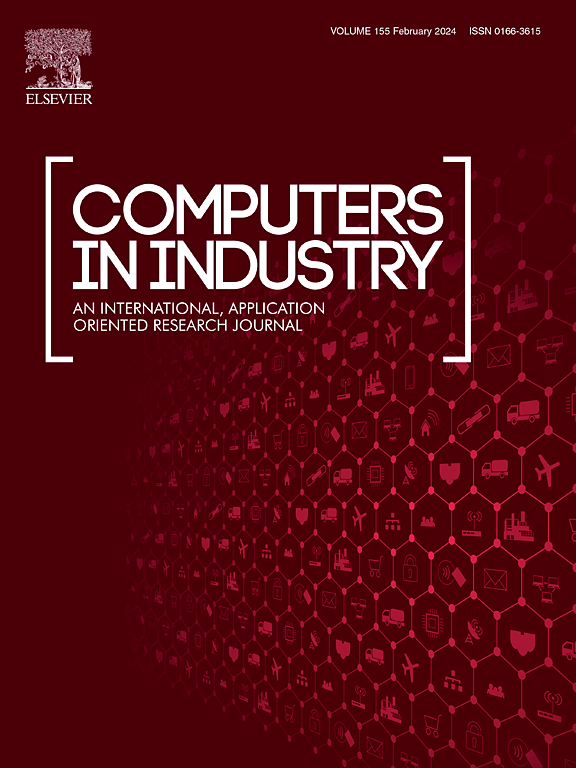Non-contact rPPG-based human status assessment via a spatial–temporal attention feature fusion network with anti-aliasing
IF 8.2
1区 计算机科学
Q1 COMPUTER SCIENCE, INTERDISCIPLINARY APPLICATIONS
引用次数: 0
Abstract
Remote Photoplethysmography (rPPG) is a cost-effective and non-contact technology that enables real-time monitoring of physiological status by extracting vital information such as heart rate (HR). This capability enables the assessment of fatigue and stress, helping to prevent accidents by identifying risky conditions early. Continuous monitoring with rPPG reduces operational risks, contributing to safer industrial and medical environments. However, the performance of rPPG is challenged by complex backgrounds and facial motions in industrial environments, which complicates feature extraction. To address these challenges, this paper proposes a spatial–temporal attention feature fusion network with anti-aliasing (ST-ASENet) for human status assessment. The ST-ASENet encodes spatial–temporal facial signals from multiple regions of interest (ROI) and enhances feature extraction through the attention mechanism. The network integrates anti-aliasing by low-pass filtering during the downsampling process to improve the accuracy of rPPG signals in complex environments. It calculates HR, respiratory rate (RR), and heart rate variability (HRV) for status evaluation. Additionally, the Robotics Operator Factors Assessment (ROFA) dataset is introduced, featuring diverse individuals and environments to improve the robustness of ST-ASENet. Experimental results demonstrate that ST-ASENet outperforms state-of-the-art methods in HR estimation and shows effectiveness across various industrial scenarios. The proposed method fosters operational efficiency and a data-driven approach to human-centric safety, making rPPG invaluable in modern, health-focused workplaces.
基于特征融合嵌入抗混叠的非接触rppg工业人体状态评估
远程光电容积脉搏波描记(rPPG)是一种具有成本效益的非接触式技术,可以通过提取心率(HR)等重要信息来实时监测生理状态。这种能力可以评估疲劳和压力,帮助通过早期识别危险情况来防止事故的发生。使用rPPG进行持续监测可降低操作风险,有助于提高工业和医疗环境的安全性。然而,rPPG的性能受到工业环境中复杂背景和面部运动的挑战,这使得特征提取变得复杂。为了解决这些问题,本文提出了一种用于人类状态评估的具有抗混叠的时空注意力特征融合网络(ST-ASENet)。ST-ASENet对来自多个感兴趣区域(ROI)的时空面部信号进行编码,并通过注意机制增强特征提取。该网络在下采样过程中通过低通滤波实现抗混叠,提高了rPPG信号在复杂环境下的精度。它计算HR、呼吸率(RR)和心率变异性(HRV)来评估状态。此外,引入了机器人操作员因素评估(ROFA)数据集,具有不同的个体和环境,以提高ST-ASENet的鲁棒性。实验结果表明,ST-ASENet在人力资源估计方面优于最先进的方法,并在各种工业场景中显示出有效性。拟议的方法提高了操作效率和数据驱动的方法,以实现以人为本的安全,使rPPG在以健康为重点的现代工作场所中变得非常宝贵。
本文章由计算机程序翻译,如有差异,请以英文原文为准。
求助全文
约1分钟内获得全文
求助全文
来源期刊

Computers in Industry
工程技术-计算机:跨学科应用
CiteScore
18.90
自引率
8.00%
发文量
152
审稿时长
22 days
期刊介绍:
The objective of Computers in Industry is to present original, high-quality, application-oriented research papers that:
• Illuminate emerging trends and possibilities in the utilization of Information and Communication Technology in industry;
• Establish connections or integrations across various technology domains within the expansive realm of computer applications for industry;
• Foster connections or integrations across diverse application areas of ICT in industry.
 求助内容:
求助内容: 应助结果提醒方式:
应助结果提醒方式:


